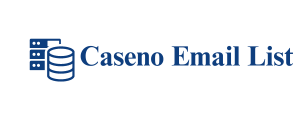Why Database Security Tools Matter
Understanding the Threats:
Databases are vulnerable to a diverse range of threats, each requiring specific security measures. Here’s a breakdown of some common database security adversaries:
SQL Injection Attacks:
Hackers exploit loopholes in web applications to inject malicious SQL code into database queries. This code can steal, modify, or delete sensitive data.
Brute-Force Attacks:
Attackers utilize automated nauthorized access.
Malware and Insider
Threats: Malicious software or disgruntled employees with access privileges can compromise data integrity and security.
Data Breaches:
Accidental exposure of data or intentional theft due to security weaknesses or human error can occur.
Denial-of-Service (DoS) Attacks:
Attackers over wh data and disrupting operations.
Building a Secure Database:
A Multi-Layered Approach
Effective database security necessitates a co essential database security tools across various categories:
Access Control and Authentication:
Role-Based Access Control (RBAC) Tools: These tools Don’t just say “hello” forever (often built into database management systems) enable you to define user rol nctions, minimizing the attack surface.
Multi-Factor Authentication (MFA) Tools: I oft Authenticator, and Duo Security.
Data Encryption:
Transparent Data Encryption (TDE) Tools: These tools (often offered by database vendors) encrypt data at rest within the datab ption.
Secure Sockets Layer (SSL)/Transport Layer Security (TLS) Tools: These protocols encrypt data in transit between applications and the database. Popular options include OpenSSL and Let’s Encrypt.
Vulnerability Management and Patching:
Vulnerability Scanning Tools: These tools automate the Zhihu case analysis Summary process of scanning your database software and configurations for known vulnerabilities. Popular options include Acunetix, Nessus Professional, and OpenVAS.
Patch Management Tools: Utilize tools that automate the download and installation of security patches released by database vendors. Th (System Center Configuration Manager).
Activity Monitoring and Logging:
Security Information and Event Management (SIEM) Systems: These enterprise-grade tools provide centralized monitoring o r options include Splunk, Elastic Stack (ELK Stack), and IBM Security QRadar.

